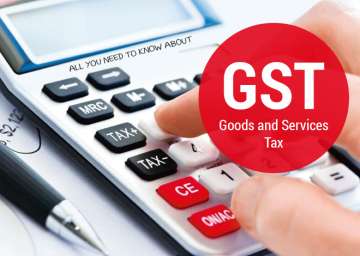Goods and Services Tax: How GST rates affect the household budget of Aam Aadmi
GST Rates: Here is how the new Goods and Services Tax (GST) will impact middle-class households.

Hours from now, India will have its biggest tax reform in place in the form of the Goods and Services Tax (GST). The stage is set for a red-carpet welcome to the big-bang reform at the Parliament's Central Hall as the clock strikes midnight. However, away from the critiques and the jargon, the primary concern for the Aam Aadmi is how this piece of reform changes his or her daily life. Most of it is because the common man is yet to understand the true impact of the GST rates under the unified indirect taxation system.
While GST is applicable mainly for businesses and won’t directly affect the salaried class and self-employed professionals per say, the impact will be felt due to the change in rates of the goods and services they avail. The GST is an indirect tax and does not change the way you pay your taxes. It is only your expenditure that will see a change, though the impact of the change will take a while to be assessed.
Also Read: GST: Complete list of items and their GST rates
If you are still confused, let us help you gauge the impact of GST on middle-class households under different income brackets.
Scenario 1
The impact on the budget of a family that earns between Rs 50,000 and Rs 80,000 will be very marginal, meaning the family will have to shell out a few hundred rupees more. For example, a family comprising four members will have to pay little more for education and home expenses as the two services will attract 18 per cent GST rate. However, other expenses that includes packaged foods, EMI for two-wheeler, toiletries and entertainment will marginally go down because GST rates on these services have been cut.
Scenario 2
The impact on the budget of a family, comprising four members, that earns around Rs 80,000 per month will be the same. The family will have to shell out a few hundred rupees more.
Scenario 3
Families comprising four members and earning around Rs 1.75 lakh per month will have to bear a little more heat than the families earning less than Rs 1 lakh. Besides shelling out more on education and home expenses, they will have to pay more for toiletries and branded goods.
Also Read: What is GST, GST Rates, its impact and what it means for India
Services that will have a direct impact on middle class families:
- Services, including banking and telecom, will get more expensive, as will flats, ready-made garments, monthly mobile bills and tuition fees.
- From July 1, when you visit an air-conditioned restaurant, be ready to shell out 18 per cent as taxes. In case you prefer a non-air-conditioned food joint, then you will save 6 per cent as such restaurants will attract 12 per cent GST.
- Mobile bills, tuition fees and salon visits will also get costlier by 3 per cent, as GST at the rate of 18 per cent will be applicable on all services from July 1 as compared to the current service tax rate of 15 per cent.
- Apparels above Rs 1,000 will attract 12 per cent tax as compared to the current 6 per cent state VAT. It may be noted that apparels below 1,000 will attract GST at the rate of 5 per cent.
- In GST regime, buying a flat or shop, will attract GST of 12 per cent as compared to around 6 per cent currently.
Other services where the middle class will save more:
- With 81 per cent of items falling below or in the 18 per cent tax bracket, certain goods that will become cheaper are salad dressings, mayonnaise, weighing machinery, static converters (UPS), electric transformers, winding wires, two-way radio (walkie talkie) etc.
- Postage or revenue stamps will also become cheaper as GST on these has been reduced to 5 per cent.
- Cutlery, ketchup, sauces and pickle under GST will become cheaper as they will be taxed at 12 per cent.
- Salt, children's picture, drawing or colouring books and cereal grains have been exempted under GST. Playing cards, chess board, carrom board and other board games have been reduced to 12 per cent GST rate. Rough precious and semi-precious stones have been kept at a special rate of 0.25 per cent under GST.